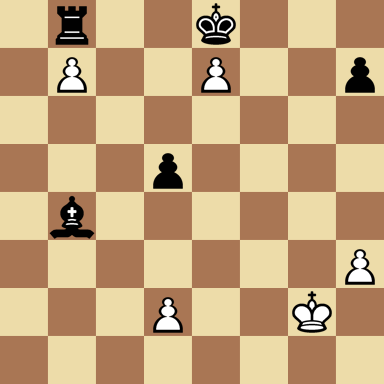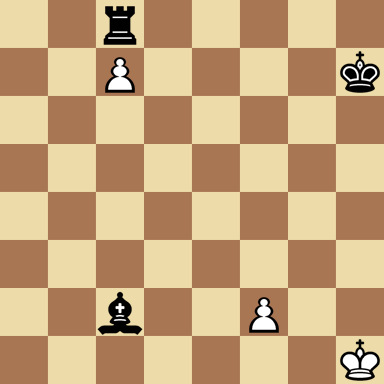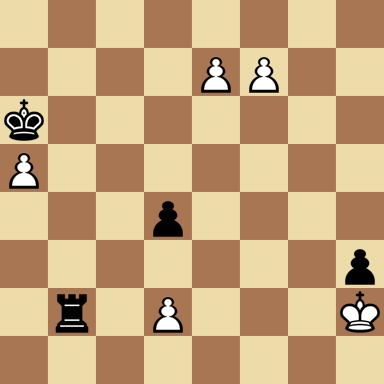|
THE PASSED PAWN Home | Traps | Openings | Endgames | Puzzles | Library | About me In the endgames, when the effective threat to the king is minimized, players start worrying about material advantage. As in regular chess, they try to promote. Of course, pawns just don't promote by themselves, because things can get in the way. The things are called blockers. A typical endgame is Kp-kP. This notation means that both players have a king and a pawn, and the kings are blocking enemy pawns. It is easy to see that the player who has the most advanced pawn wins (and if the pawns are equally advanced, then the player who is to move loses). Chess players call this concept zugzwang. In the ideal situation, if all pieces choose to serve as blockers, then the player with the most pieces wins. Essentially, they all have equal value: knight, bishop, rook. Of course, we shall see example where its not quite the case. Take a look at the following diagram:  Black to move: game drawn. Black's rook will never get out of this hole, so its effectively useless. If black will allow white to play d3, then their bishop would have effective blocking value 0 (white's pawns are already blocked and it can't capture). Oh, and Bxd2 loses the tempo war.  Black to move: switching blockers. Its a pretty easy tactic. Black can play 1... Bf5 and slide the rook out at will. Sometimes, pawns can remain unblocked, for instance if you move the black bishop to e5, they have the new tactical opportunity to play 1... Rg8.  Black to move: black's rook has increased blocking potential. Keeping passed pawns together on the 7th is not a very good idea. Black can win with 1... Rb7! Here, the black rook has the effective blocking value 2. |
||||